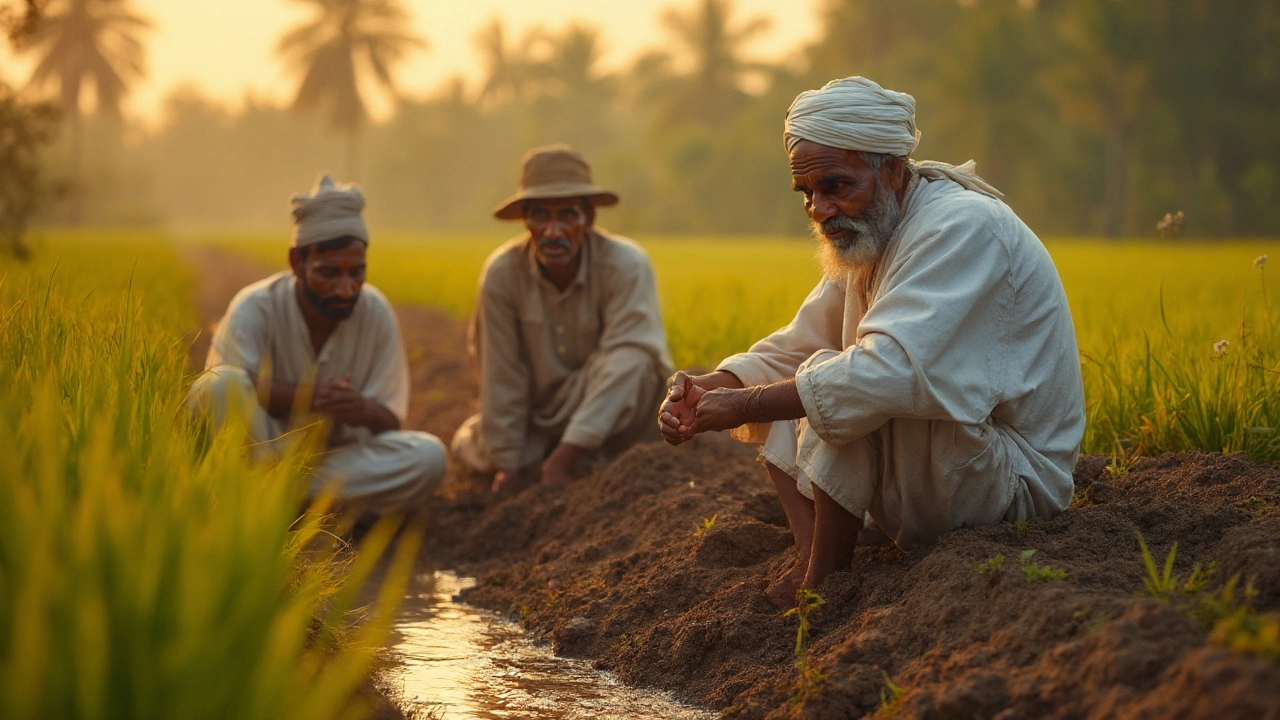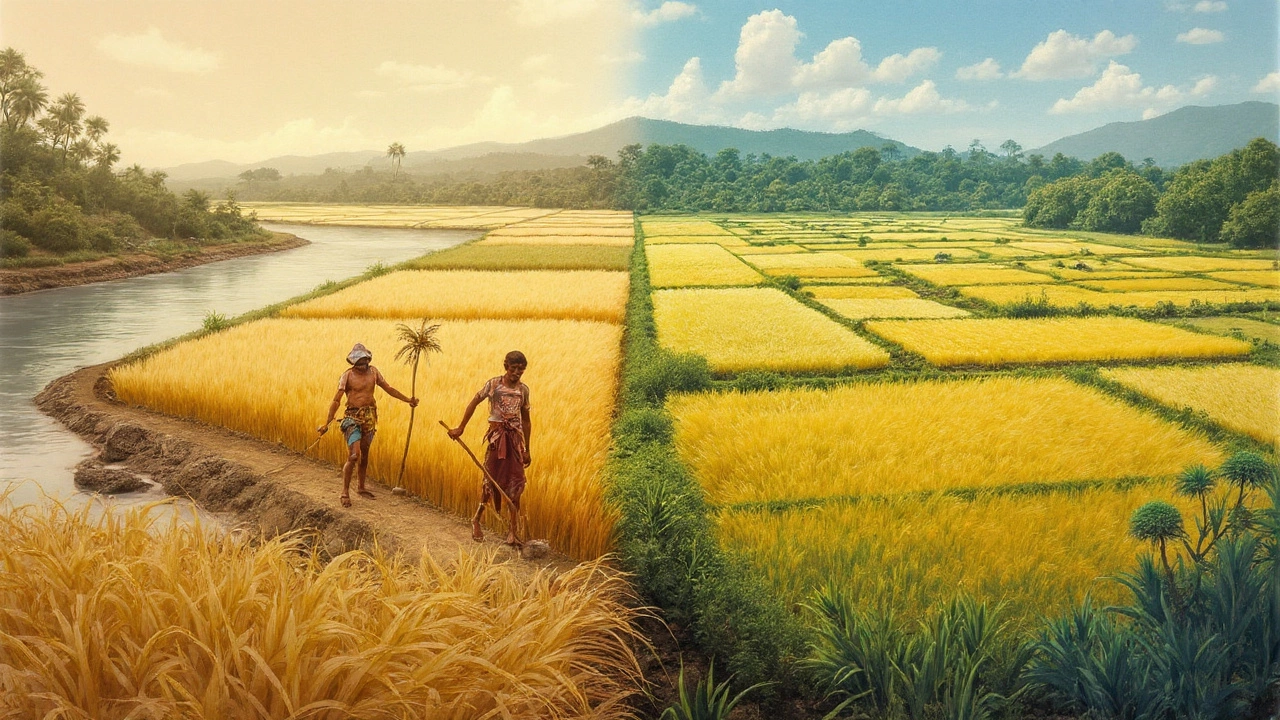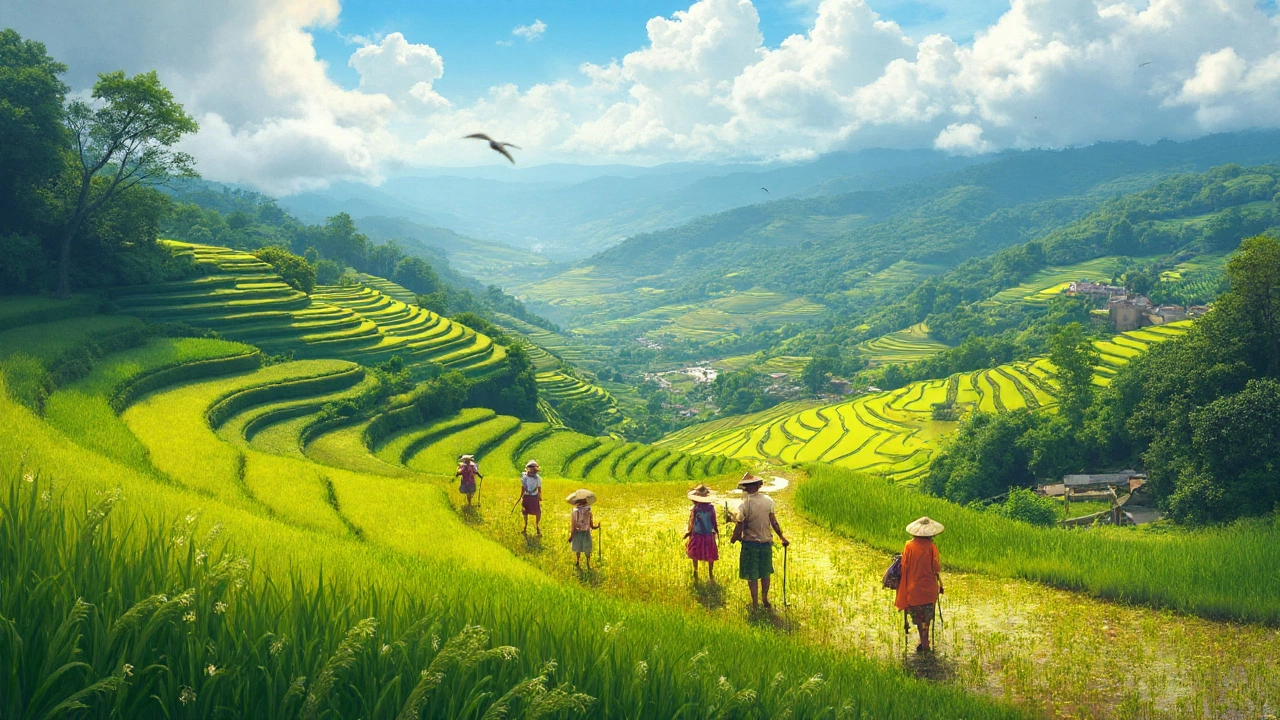If you walk through a rice field in Indonesia during the rainy season, you’ve probably seen something that looks nearly impossible to copy in your own backyard—a landscape carved into elaborate, glittering steps, each overflowing with water. But those terraces aren’t just for show. For centuries, farmers across Asia have shaped land for one goal: making the world’s most-eaten grain thrive. So what is the secret? Which topography truly makes or breaks a successful rice harvest?
The Science and History of Rice Field Topography
Think of rice as an extremely thirsty crop. Unlike wheat or corn, which will croak if they’re stuck in standing water for more than a day, rice is practically a fish out of water in the dry ground. It craves fields that can hold water just long enough for the grains to fatten up. That’s why, when you look at traditional rice-growing regions—think about the rice paddies you see on postcards from southern China, Vietnam, or Bali—they almost always have one thing in common: they’re either very flat or sculpted into terraces to trap water. These landscapes didn’t just pop up overnight. Over 2,000 years ago, people in the Yangtze River Valley figured out how to turn every natural dip and slope into a lush rice paddy. The terraces of Banaue in the Philippines, some reaching back 2,000 years, are still active today exactly because their shape holds water like a green mountain bathtub. Modern research backs these ancient tricks—fields that stay wet for longer produce much higher rice yields than fields where water runs away too quickly.
Why all this work to trap water? Rice uses what’s called “flooded irrigation,” or “paddy” growing, for a reason. Standing water drowns out weeds that would otherwise compete with the rice. It helps release nutrients stuck in the soil and even reduces pests. But keeping that water in place isn’t always easy. Too much slope? All the rain rushes off before it can soak in; too little, and water pools so deep it suffocates the roots. This is why prime rice land often looks like huge trays or steps. But not all rice is grown in Asia’s famous terraces. In big rice countries like the U.S., the Mississippi Delta is the king of flat rice fields—a single, endlessly level plain with clay-heavy soil underneath. That clay acts like the world’s thickest lid, holding every drop above. Whether it’s a mountain farm in Yunnan or a flat Louisiana field, the beating heart is always water management. The whole game is about keeping water where you want it, for just long enough.
To put this into perspective, here’s some real data showing average annual rice yields from different topographies, based on research from the Food and Agriculture Organization and actual field studies from Asia and the U.S.:
| Region | Topography | Average Rice Yield (t/ha) |
|---|---|---|
| Mekong Delta (Vietnam) | Flat, flood-prone plains | 6.2 |
| Ifugao, Philippines | Terraced mountain slopes | 4.1 |
| Mississippi Delta (USA) | Flat, clayey plains | 7.5 |
| Hokkaido, Japan | Gently sloping to flat valley | 5.8 |
| Eastern India | Undulating, floodplain | 5.2 |
As this table shows, super-flat areas and skilfully terraced slopes both bring pretty good yields as long as water stays put. In other words, the best topography for rice is all about controlling water—either by nature or by smart design.

Essential Features for an Ideal Rice Field
You don’t have to move mountains to grow rice, but you do need the right features. The holy grail for most rice farmers? A plot of land that either lies perfectly flat or can be worked into shallow steps. Here’s why flat or gently stepped ground is a game-changer: water moves slowly, spreads evenly, and hangs around. If the field is too steep, water dribbles away before the rice can gobble it up. But if it’s too flat and has poor drainage, you end up with stagnant pools that drown the roots. So, what’s the sweet spot? Slightly sloping land (less than 1%) is best for getting water to flow just enough without draining out the bottom of the field.
Let’s talk about soil. Not just any dirt will do. The best rice fields have heavy, dense soils—think clay or clay loam—that naturally lock in moisture and stop precious irrigation from sneaking away underground. According to a real-world study done by the International Rice Research Institute, rice fields with at least 30% clay content trap 25% more water than sandy fields. That means more time for the crops to drink and less time worrying about drought. If you’re setting up a new rice patch, a simple test is to dig a small hole, fill it with water, and come back in a few hours. If the water mostly sticks around, you’ve got a decent spot. If it vanishes, you’ll need to work on improving the clay content (or forget the site entirely).
Field shape matters, too. The classic rectangle isn’t just for show; it lets you set up simple irrigation systems, whether it’s flooding from a canal or sluicing water downhill from a local stream. It’s no coincidence that massive rice operations in Arkansas and Thailand both use regimented fields boxed by low banks (called “bunds”). These levees keep water locked inside, and smart farmers always make sure the field edges are higher than the rest to stop water from sneaking away. Terraced fields, like those in Sapa, Vietnam, are built in steps about 1 meter tall—just the right amount to catch water during heavy summer rains but not so high that each level drops too much water to the next.
One real trick that saves both work and headaches is land leveling. Fields that slope randomly are a nightmare for controlling water. Precision land leveling (using simple tools or, for bigger farms, laser-guided tractors) saves up to 30% of irrigation water and boosts yields up to 15%, according to the same IRRI dataset. So, if you’re dead set on rice but stuck with a bumpy patch, flatten it as much as possible before anything else. Sure, that might mean a day with a spade, but your back—and your future rice—will thank you.
For folks in smaller-scale or backyard situations, remember: even mini-terraces or flooded raised beds do wonders if you have a naturally sloping garden. And don’t forget to manage water inflow and outflow, using simple pipe inlets, siphons, or ditches. You don’t want water running away before the roots have had their fill, but at the same time, you need an outlet to drain excess during storms. A clogged or nonexistent drain is the recipe for “dead” rice roots, so always include one, even if it’s just a shovel-dug channel.
Put all this together and the message is clear: the best rice fields are flat or nearly flat but can also be made on hills with terracing. The common ingredient? Mastery over water, soil that holds together, and field shapes that make irrigation easy, not a source of stress.

Tips and Tricks for Adapting to Different Landscapes
Not everyone has the luxury of picking the perfect plot, so what if your land doesn’t match up to textbook standards? Time to get creative—and learning from the world’s smartest rice farmers is the best shortcut. Here’s a real insider’s tip: on steeper slopes, don’t fight gravity—use it. Carve terraces with just enough drop to move water slowly from one to the next. A study in Nepal’s hilly regions showed that properly made terraces increase usable growing space by 40%, even on slopes over 25% steep. That’s a lot of extra rice from soil that otherwise would have just washed away in the rain.
On uneven or mixed terrain, dividing large fields into smaller plots makes a big difference. By boxing in chunks with low soil walls and controlling valves or simple boards, you can flood and drain each micro-plot on your terms. Big commercial farms in Bangladesh and India use small check dams and bunds to create “compartments.” This way, even if one section is higher, the farmer can trickle water down and reuse it instead of losing it all to runoff.
If your soil is too sandy or drains too fast, don’t lose hope. Many farmers in California started with what seemed like hopeless land. Over time, they improved their soil by adding layers of clay-rich silt, leftover compost, or, in older times, even letting animals tramp manure into the ground before the plant season. It takes patience, but slowly building up a heavier top layer helps trap water—just like building a firmer bowl to hold soup. It might sound old-school, but these methods still work, and they’re why some farmers in Italy’s Po Valley still alternate rice with cow fields. Cows feed on leftover rice straw in winter, then stamp down the manure into the soil, making it even more water-retentive for the next rice crop.
Another trick is using plastic lining for really small home plots (or urban rooftop beds). Lining the bottom of a raised bed with pond liner or thick plastic prevents water loss, so even if your soil is sandy, the water stays around the roots long enough for rice to thrive. Some city gardeners grow rice in old bathtubs or kid’s pools for the same reason. So, small-scale doesn’t mean you miss out on rice harvests—as long as you get creative with water and soil.
If you’re dealing with very high rainfall or flood-prone land, embrace it. Flooded fields—managed at just the right depth (5-10 cm for most varieties)—are what rice loves. In the Ganges Delta, some farmers adjust bund heights seasonally, building them higher just before the monsoon. During dry years, they lower the bunds to avoid waterlogging. It’s flexible and makes the most of changing weather. And when drought hits, having properly designed bunds and drains lets you ration the water you have, sending it where it’s needed most. Smart, adjustable water management always beats rigid, one-size-fits-all plans.
For anyone still in doubt, here’s the bottom line: the best topography for rice isn’t locked down to one shape. As long as you control water, improve soil, and give your plants just enough breathing room without losing precious moisture, you’re doing it right. Ancient terraces, new laser-leveled fields, or tiny backyard plots—the shape works if you set it up for rice’s thirsty roots.

